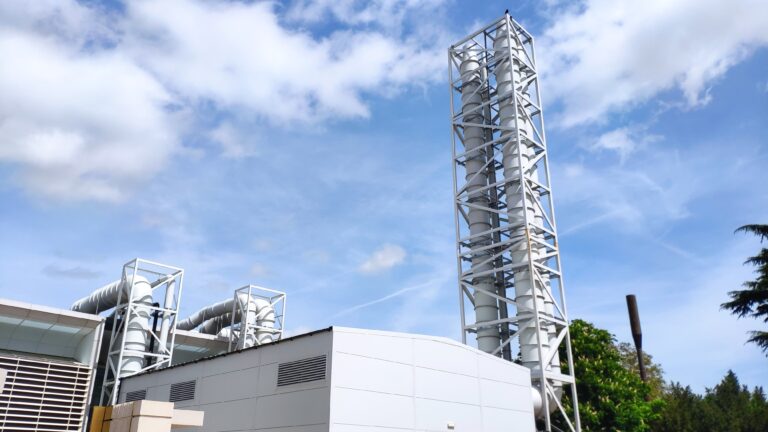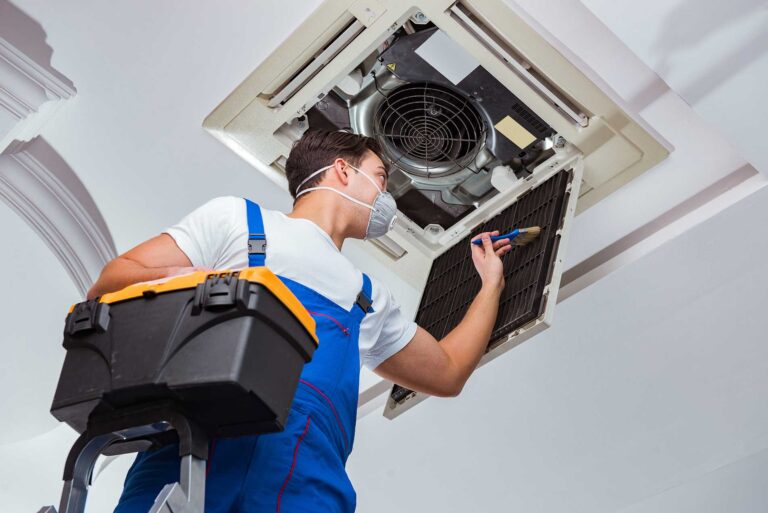
Embodied carbon – how the HVAC industry is adapting
Barry Trewhitt, President of HEVAC, discusses the rise of embodied carbon and its impact on the heating, ventilation and air conditioning industry.
In recent years, the conversation around embodied carbon has been amplified somewhat, pushing it up the modern building design agenda.
Newly constructed buildings are, in the main, designed to be sustainable and energy efficient, keeping emissions to a minimum throughout the entire lifecycle. Heating, ventilation and air conditioning (HVAC) services have the potential to consume large amounts of energy if not properly incorporated into a wider energy management system, so developers and contractors considering their embodied carbon responsibilities will be increasingly aware of the prospective impact on their figures.
Embodied carbon refers to the total emissions associated with the construction of a building, including production and transportation, rather than when it is in use. This differs from the carbon footprint of the building which relates to the emissions produced during ongoing building use.
Embodied carbon is now increasingly recognised as a key dynamic in the battle against climate change as it can represent a significant portion of a building’s overall carbon footprint.
Currently accounting for around 11% of all greenhouse gas emissions, it is estimated that, unless changes are made, by 2050 embodied and operational carbon emissions will be at similar levels. As more companies commit to Net Zero pathways, there will naturally be more of a focus on reducing the carbon footprint of what is being built and lower levels of embodied carbon will result in a lower requirement for carbon sequestration.
However, without change there is little chance of meeting Net Zero targets. This has led to call for the introduction of the so-called ‘Part Z of the Building Regulations.’
Part Z would specifically require that embodied carbon be measured and minimised as part of the design and construction process for new buildings and significant refurbishments. It would impose requirements on developers and builders to disclose the embodied carbon of a building and consider strategies to reduce it – a significant industry change and one that would alter the design and build process.
The components taken into account when considering embodied carbon can be categorised as material extraction, manufacturing, transportation and construction. The proposals outlined in Part Z would impact all these areas and include the following:
- Carbon reporting – Builders and developers would need to provide a carbon assessment for the construction project, which would include the embodied carbon of all materials used and the total carbon emissions throughout the life cycle of the building.
- Carbon reduction targets – Part Z would set out specific carbon reduction targets to be met at different stages of the building process, from design to construction, and possibly even in the operational phase.
- Material transparency – There would be requirements for better transparency regarding the carbon content of materials used in construction, which could lead to a standardised carbon measurement system for materials.
- Life cycle considerations – The regulations would take a whole-life carbon approach, ensuring that the embodied carbon is not just considered at the point of construction but also over the entire lifespan of the building, including demolition or reuse at the end of its life.
- Incentives for low-carbon building – Possible incentives, such as credits or potential building certifications, for using materials with lower embodied carbon and for designing structures that are easier to dismantle and reuse or recycle.

Impact on HVAC
As the influence of embodied carbon is increasingly felt throughout the built environment, the HVAC sector will undoubtedly begin to further acclimatise.
In the context of materials and design, HVAC manufacturers are already prioritising the selection of lower carbon system components as well as optimising system design to reduce the amounts of material used.
Advances in manufacturing technologies are reducing the embodied carbon of HVAC components by streamlining the manufacturing process and reducing waste, whilst a move towards cleaner manufacturing processes and renewable energy in production facilities is helping to further reduce the embodied carbon impact.
For some, the next stage will be balancing embodied and operational carbon using a lifecycle assessment . This is an approach that helps ensure that the overall environmental impact of a building’s HVAC system is minimised across its entire lifecycle, from manufacturing to installation to operation and eventual decommissioning.
It is increasingly likely that new regulations and codes will be introduced to sit alongside existing building rating systems such as BREEAM and the WELL Building Standard.
The first universal cost standard for reporting embodied and operational carbon in the construction and lifecycle of buildings was launched in 2022. Demand for greater transparency is now leading to increases in voluntary reporting requirements, with companies in the HVAC sector choosing to disclose embodied carbon figures to demonstrate compliance with carbon reduction commitments.

End of life and the circular economy
The HVAC industry has also begun to explore systems and components that can be more easily recycled at the end of their useful life. For example, modular HVAC units may allow for easier disassembly and recycling of components, which can help reduce the overall embodied carbon when the system is decommissioned.
The shift towards a circular economy is also gaining traction in HVAC, with efforts to design systems that are more durable, maintainable, and recyclable. By reducing the frequency of replacement and extending the life of equipment, embodied carbon can be spread over a longer period of use.
Parts of the HVAC sector will play a key role in pushing the circular economy approach, with the recovery, reconditioning and reuse of refrigerants of particular importance. The F-Gas Regulations aim to significantly cut the number of new hydrofluorocarbons (HFC) placed on the market but reclaimed refrigerants are not subject to phasedown quotas. A circular economy approach to refrigerants could be a vital part of the F-Gas phaseout and help to maintain the supply chain over the long-term.
Away from the circular economy, newer refrigerants with lower global warming potential (GWP) can help to reduce both operational costs and embodied carbon, whilst eliminating leaks of GWP chemicals will also help to shrink an embodied carbon footprint.
Carbon reduction targets are often focused on the total emissions of a building’s lifecycle but to really deliver on Net Zero the scope now needs widening to tackle embodied carbon emissions.
With two-thirds of the whole life carbon of a commercial building now embodied, the environmental impact is substantial and cannot be ignored. The HVAC sector is responding by focusing on more sustainable materials, efficient designs, and refrigerants with lower global warming potential.
By considering embodied carbon alongside operational carbon, the industry is moving toward more holistic and sustainable solutions that reduce both the upfront environmental impact and long-term carbon emissions.



